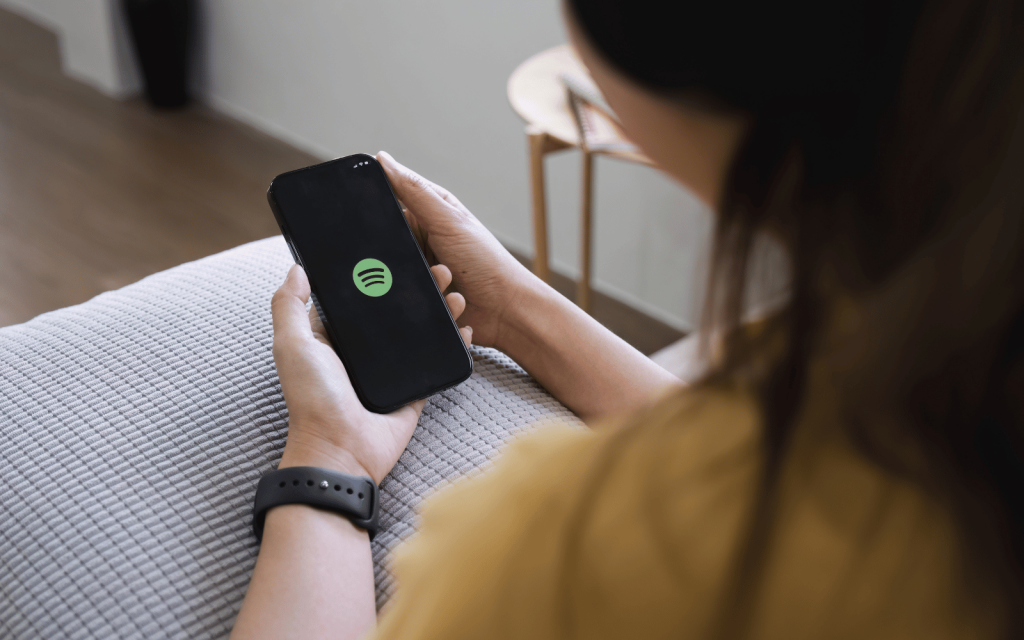It is not much of an exaggeration to say that Spotify saved the music industry. Global revenue for recorded music reached its zenith in 1999 – the same year that the seeds of the industry’s near destruction were sown.
When Napster launched that year it gave music lovers around the world access to an almost limitless catalogue of songs for free. To millions of young people, it would take more than legal action against Napster and others to persuade them that they should return to analogue modes of listening. Spotify’s emergence in 2006 demonstrated that it was possible to monetise streaming in a way that was both legal and attractive to music lovers.
Eighteen years on and Spotify has just turned its largest quarterly gross profit – more than a billion euros (£859 million) in the three months to the end of March. Previously, its regular posting of quarterly losses had many commentators arguing that Spotify was ailing.
One reason for this was that its initial success in striking deals with record labels for streaming their music was imitated by what would become formidable competitors: Amazon Music, Apple Music and YouTube Music. What makes these rivals particularly powerful is that their music offerings can be subsidised by their wider business. This willingness to bear losses in music streaming if it benefits other aspects of their business might explain why the monthly subscription for all the main platforms was held at the arbitrary cross-currency price point of 9.99 from 2009 to 2021.
This decline in real terms of music streaming subscription revenue has been mirrored in the real terms drop in total global revenue for recorded music. Thus, despite massive rises in the number of subscribers in the last decade, with 2016 alone witnessing a worldwide growth of 65%, it took until 2021 for recorded music revenue to return to the level of 1999, even though that represented a significant decline in real terms.
Is streaming working for musicians?
This drop in overall revenue has had an acute impact on those whose content enables the market in music streaming, namely musicians and songwriters. Their revenue from streaming is dependent on a pro-rata payment model. This means that the proportion of a platform’s overall revenue that they receive is calculated by the platform’s total number of streams divided by the number of times their particular songs are downloaded. One of the consequences is that money from individual subscribers does not go directly to the musicians whose music they play, but into a general revenue pot.
Musicians’ dissatisfaction with what they see as poor and opaque forms of streaming revenue was brought into stark relief when COVID stopped their main sources of income: gigging and selling merchandise. Parliamentarians launched an investigation in 2020, with one of its discussions centred on replacing the pro-rata payment model with a user-centric model. This would involve remunerating musicians and songwriters from the subscribers who actually paid for their songs, creating a direct link between fans and the music they play.
If the lack of overall revenue is the main problem with music streaming, then more money will need to be generated from subscriptions. Slowing growth in global subscriptions in the past few years bears out former Spotify chief economist Will Page’s claim that the number of subscribers is reaching saturation point. Indeed, Spotify’s Q1 profits came at the expense of its forecast for growing its monthly active users.
Growth in revenue will therefore need to come from increases in the subscription price. Studies have shown that adopting a user-centric model would not make much difference in the short term to musicians’ earnings. But I would argue that indicating to consumers a clear link to the creators of the music they streamed would make them more amenable to price rises.
Can Spotify move towards a more sustainable model?
Unlike video streaming platforms, each of which has distinct content, the main music streaming platforms offer the same unlimited menu. Spotify’s attempts to differentiate itself from competitors have involved a very expensive move into podcasting, with much of the US$1 billion (£804 million) being spent on luring high-profile celebrities like Joe Rogan, Prince Harry and Meghan Markle, and Barack and Michelle Obama.
This part of its business has, though, haemorrhaged money, which puts further pressure on musicians. Nonetheless, this, and recent ventures like the opening of a merch hub for artists last year, demonstrate to its investors that Spotify is still a company that is constantly innovating to stay one step ahead of its rivals.
Read More: Spotify’s lossless audio steaming could finally see light as a ‘Music Pro’ add-on
The recent laying off of 17% of its workforce will lead to a short-term hit of 130-145 million euros in redundancy payments. But this week’s results seem to show it has put the company on a more financially sustainable footing. The 9.99 price point spell was broken last year when subscriptions rose to 10.99, with a further rise to £11.99 in the UK from next month.
Despite that first price point rise in July 2023, the last quarter for that year saw Spotify increasing its premium subscribers by 4%, suggesting that its growth strategy is starting to pay off. Spotify continues to lead its formidable competitors in the race for subscribers. And it might well have stumbled upon a strategy to continue its dominance and to start generating a long-term profit.
- is a Senior Lecturer in the Department of Culture, Media & Creative Industries, King’s College London
- This article first appeared in The Conversation




